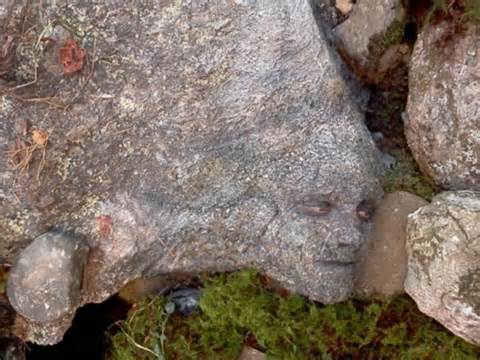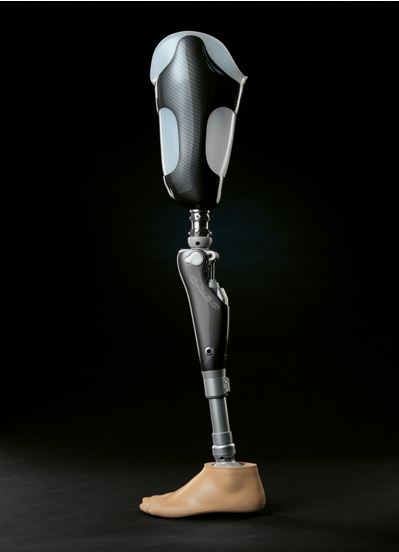Yeah, she knows she's rocking it.
If you watched the Hunger Games movies and noticed that they weren't desecrated, weeping, bodice-ripping, zombie-riddled shadows of their book selves, you have Suzanne Collins to thank for that. Unlike most authors, who step aside once the ink on their movies deals has dried to stand in a corner with their hands over their ears screaming "STOP RUINING MY MASTERPIECE OH GOD", Suzanne Collins has had an incredible amount of influence on the movie adaptations of her books.
Because she wrote them.
Because she wrote them.
A process which involved buying a vintage typewriter and changing her name to Phil.
Collins was offered her movie deal before a screenplay adaptation had been made, and she stepped up to the plate to serve as a producer and lead scriptwriter for the project. That's why the movies aren't filled with made-up characters, outlandish special effects or Peacekeepers riding unicorns - Collins got to approach the screenwriting from a "how do I not stain my legacy for future generations" perspective, instead of a "what can I throw in here to make people buy tickets" perspective. And on the whole, I feel like Collins did a good job. The movies are entertaining, and they follow the plot of the book.
That said, there are a few differences between movie and book that I didn't understand. In particular, these three big things were cut from the movie, and I really think they'd have been worth keeping.
Obviously, some quasi-spoilers follow.
The Avoxes
In both the movie and the book, the Capitol is run by ruthless, cold-blooded leaders who will do anything to keep the enslaved districts in check. In the movie, this means that anyone who attempts to oppose or escape the Capitol's control is rewarded with a swift, violent death by suffocation in President Snow's woolly grandpa beard. The Capitol of the books, however, is a little bit smarter.
Snow's beard hungers for another victim.
The Capitol wants its detractors to be silent, but they also hate to waste perfectly good human labor. So what's the most obvious and horrible solution here? The Avoxes, of course.
You wear that and think about what you did.
Admittedly, their costumes did little to aid their visibility.
To illustrate how terrible the life of an Avox is, consider the last two pictures you just looked at. The Avox woman depicted in both of those screenshots is a character named Lavinia, and in the first two books, she serves as an attendant/servant/waitress/horrifying mute slave to the team from District 12. Her condition actually isn't the thing about her the disturbs Katniss the most; long before Lavinia served dinner to the team at the Capitol, Katniss had encountered the redhead when she was whole, with tongue intact. Early on in book one, Katniss and Gale are forced to look on helplessly as a pair of Capitol runaways are hunted down in the woods; Lavinia is captured in a net, while her male companion, whom Katniss assumes to be her brother or lover, is killed instantly. Lavinia eventually meets an even worse demise, when she is tortured to death in front of Peeta to speed his progress towards face-eating insanity.
The Avoxes are one of the major things that make the Capitol so sinister. An enemy that kills everyone who displeases it is frightening, but predictable. The only possible negative outcome for fighting back is death. But an enemy who can take its opponents and turn them into something like the Avoxes is far more frightening. An enemy like that is creative, twisted, and capable of practically anything. A dead rebel isn't helpful for anyone. An enslaved Avox must endure a life of undignified misery, all the while advancing the cause of the people she tried to bring down. If the movies really wanted to emphasize just how awful the Capitol is, the Avoxes are a bone-chilling detail that should not have been left out.
The Real Origin of the Mockingjay Pin
The Mockingjay pin is arguably the most important item to appear in the entire trilogy. The little gold pin is a symbol that unites the districts, strikes fear into the hearts of their oppressors, and helps clueless readers locate the series at their local bookstore. So if the pin represents everything that Katniss stands for, everything that she is willing to lay down her life and die for, its origin story must be fairly important. Does anyone remember how Katniss acquired her pin in the movie?
Here's a hint.
That's right: in the film, Katniss' infamous pin comes about as a result of a grizzled black-market soup vendor and Katniss' own magpie tendencies. Katniss is visiting one of her regular customers in the Hob (District 12's not-at-all-subtle-or-even-remotely-hidden black market) with freshly killed game; the customer, named 'Greasy Sae', routinely buys wild dog and other sketchy meats that Katiss' wealthier customers don't care for. While visiting Greasy Sae (who apparently ekes out a meagre living selling dog soup despite being in possession of pieces of gold jewelry), Katniss spots the Mockingjay pin and takes a liking to it. Greasy Sae gives it to her as a token of goodwill, because the two have done business together for a long time and have the kind of bond that can only be formed over a metric shitload of tender dog ass meat. Katniss takes the pin home and gives it to her sister Prim, who tearfully returns it after Katniss volunteers for the 74th Hunger Games. Decent origin story, right?
It would be, if you didn't know what happened in the book.
Those damn books.
The thing about Greasy Sae and the soup and the dog meat is all true, but it has nothing to do with Katniss' Mockingjay pin. As I already snarkily pointed out, a woman who wards off starvation by making soup out of weeds and vermin isn't likely to be in possession of a decent chunk of gold like that. The pin actually comes from a character named Madge Undersee.
A character who, strangely enough, mostly exists as Dianna Agron fanart.
Movie-watchers who eschew such plebeian pastimes as 'reading' won't recognize the name, because Madge Undersee did not make it into the Hunger Games movies in any capacity. In the books, she plays the small, insignificant role of being Katniss' only female friend in the world, and the wealthiest girl in the district. The pin makes its very first appearance on Madge's dress; she wears it to the reaping for the 74th Hunger Games, and Gale is offended at what he sees as an excessive display of wealth. Later on, when Katniss is waiting in the Justice Building to say goodbye to family and friends, Madge appears and gives Katniss the pin to wear as her district token. The interaction shows Katniss that she has a true friend in Madge, and that the divide between the rich and poor doesn't always have to lead to hatred, but the pin has so much more significance than that. See, the pin originally belonged to Madge's aunt - a woman named Maysilee Donner - and this isn't its first time going into the arena.
It appears in the arena three times; it appears on Etsy hundreds of times.
Maysilee Donner was a tribute in the 50th Hunger Games, the 2nd Quarter Quell, where she was one of four tributes sent from District 12 that year. She had a remarkable gift for poisons, and survived to be one of the final five tributes by coating her blowgun darts with various poisons she discovered around the arena. But it wasn't just her own life she was able to save; she once came to the rescue of fellow District 12 tribute Haymitch Abernathy, whose name you hopefully recognize. Haymitch was on the verge of having his throat cut when Maysilee killed his attacker with a poison dart. The two formed a brief alliance, but parted ways when they realized they would eventually be forced to kill each other. Maysilee's life ended shortly after the alliance did; she was shredded to death by birds in the arena, and Haymitch held her as her life ebbed away. Maysilee's life and death mirror that of Rue, the District 11 tribute who meant so much to Katniss. The pin is also the only thing that remains of the woman who saved Haymitch's life, allowing him to grow up to be the mentor who would save Katniss and Peeta time and time again.
That pin isn't just a random shiny thing Katniss found in a vendor's stall at the market. It was a gift from a friend who (SPOILER ALERT) would eventually be killed for Katniss' cause in the (EVEN BIGGER SPOILER ALERT) carpet-bombing of District 12. It's a token that represented District 12 in the only year that the little mining district actually saw victory in the games. It represents the woman whose ingenuity and sacrifice gave Katniss' most important ally his life. It's an awesome origin story, and it deserved to be told.
Peeta's Amputation
In the second half of the Hunger Games, in both the book and movie adaptations, Peeta struggles with a crippling leg injury. Unable to walk, run, jump, or otherwise do anything to keep himself alive in a deathmatch filled with desperate, athletic teenagers, Peeta lays down among some rocks and uses the power of cake decorating to camouflage himself as he waits for Katniss and/or the sweet release of death to come along.
Who the fuck orders a creek bottom themed cake?
The injury is serious, and quickly becomes life-threatening when blood poisoning sets in. In the movie, this prompts the young couple to make out until drugs fall from the sky, which Katniss uses to knock Peeta out so she can go risk her life for some antibiotics. Since a first-person trilogy would be incredibly dull if the main character died in the first book, Katniss lives, gets the medicine, and subjects the audience to an uncomfortable scene of her and Peeta smearing it all over each other.
Katniss wasn't sure if horrible, forced sexual tension could cure injuries, but goddammit, she had to try.
And in the movie, that's it. Peeta walks with a bit of a limp for the rest of the show, but after he hobbles his way to victory, the Capitol fix him right up and the leg injury is never mentioned again. In the book, things don't quite work out so smoothly.
Above: "Not working out so smoothly".
It's true that Peeta's leg infection gets under control long enough for him to limp out to the final battle. But during that fight on the cornucopia, his injured leg is slashed wide open again. Katniss is faced with a choice: she can apply a tournequet and risk doing irreversible damage to the leg, or she can leave it alone and let Peeta take his chances with bleeding out. She chooses the former. Several hours later, the pair are plucked out of the arena as the first-ever joint winners, but tourniquets were never meant to be applied for hours at a time. Between the still-present infection, the wound, and the effects of having the blood supply cut off for several hours, Peeta's leg is beyond saving, even by the Capitol's futuristic medical standards. At a post-Games interview, Katniss learns that his leg has been amputated, leaving Peeta dependent on a prosthetic.
A fact that the Capitol regards with apologetic dignity.
I'm not sure why Peeta's amputation was cut (pun only half-intended) from the movie, other than perhaps a fear that a movie about children fighting to the death would be too dark if an amputee was included. Peeta's situation isn't just a throwaway thing that gains him sympathy from the Capitol and little else; it actually profoundly affects him for the rest of the series. With his prosthetic, he's nowhere near as fast or as agile as he used to be, and that has dire consequences when he heads back into the arena in the second book. When Katniss executes her plan to shatter the roof of the area with the power of lightning, half the group has to guard the lightning tree while the other half runs down the hill to uncoil the wire. Remember, Katniss and Peeta have sworn to stay together at all costs, but in this instance, they just can't. Peeta's fake leg means that he isn't nimble enough for hill sprints, since the slightest bump or pothole could send him and his leg tumbling in opposite directions. In the book, it makes sense that they have to split up. In the movie, they fumble about for a few arbitrary reasons before Katniss and Johanna dash off with no real explanation.
Maybe Johanna had her own plans for Katniss?
It just makes things clunky, and it would have been easy enough to include in the films - especially since Peeta wears long pants at all times. On the whole, the film adaptations of the books were pretty good - they kept the spirit of the novels, and they even got to show us things beyond Katniss' perspective that we didn't get to see in a first-person book.
But with a few more added details, they could have been great.
















I totally forgot about the Apoxes! That would have made the story a bit too chilling for the younger audience. I think kids are used to seeing movies and tv shows where kids fight other kids, and death is still abstract to some but they have an idea of what it is by watching animals and bugs die, but to display something so evil as mutilation and slavery would have been too hard for parents to explain. Though its rated PG-13, I've seen younger children in the theaters, my kids included. Those would have been tough questions to answer.
ReplyDeleteI also thought removing Peeta's leg amputation (was that a double pun?) was also a wrong move, but I think it was done for the same reason. The visual would have stuck in the minds of younger children. It would have been too gruesome.
Avoxes...doh!
DeleteI figured that was probably the rationale for changing those two things.... the change in how she got her pin, though, continues to baffle me.
Delete